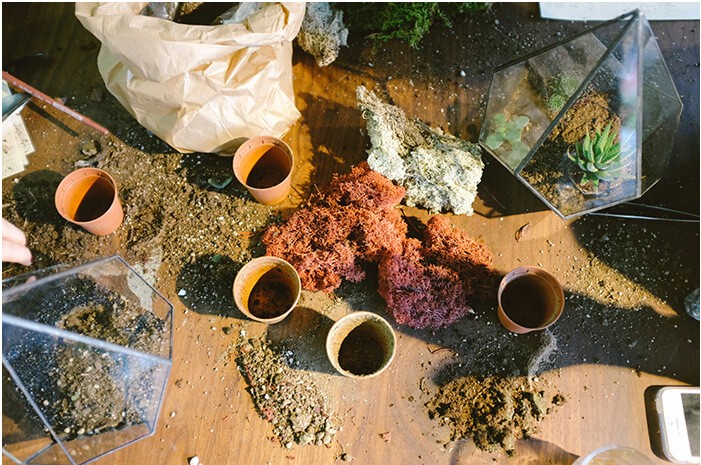Which plants should I plant and when?

As we get older it is important to increase our levels of physical activity for our mobility and flexibility. Doing regular exercises which you don’t find particularly interesting can feel tedious, so if you have an interest in nature or just prefer being outdoors, gardening could be the perfect way to help improve your endurance and strength.
There are many plants and flowers which are simply stunning. They can add a colour and life to your garden, provide you with a chance to express your creativity, while also reducing stress levels and improving your well-being. Gardening doesn’t have to be a chore; there are many beautiful plants that require little maintenance but still blossom year on year.
Here is our short guide to easy-go gardening, so your garden can be full with life all year round.
Winter
Time to get organised! During the cold winter months, there is not a lot of planting to be done so this is the perfect time to care and prepare for the warmers seasons ahead. But January isn’t all about maintenance, it is a great opportunity to sit in with a cup of tea and start researching which seeds you would like to plant!
Take a look at a few different catalogues or draw out some designs for the layout of your garden. This is also a good time to dig out all of your gardening tools and see if any repairs are needed.
When you are ready to brave the chilly mornings, remove any dead branches on shrubs and hedges, ensure all of your perennials are tidied up, frost is removed and they have been firmly replanted.
During February this is the perfect time to plant any roses and deciduous shrubs, plus order in your chosen summer flowering bulbs in preparation for planting!
Annuals are also a fantastic way to bring life to your garden, and with little investment! Lots of annuals can be started from a seed in February and will be blooming within 8 or 12 weeks.
Some classic annuals include the sunflower and pot marigolds, but there are also some more unusual plants that are just as beautiful, such as Bells of Ireland and Penny Black. With so many annuals available to plant in February, you can be sure to find the best fit to suit your creativity and ideal garden design.
Spring
Expect to see your spring flowers begin to bloom! Plants such as daffodils will blossom from the previous year. The bright golden and orange colours will bring a huge amount of character to your garden, while also complementing any other spring bloomers of your choice.
Iris, Crocus, and Tulips will also add a cheerfulness and elegant beauty to your garden. But be aware that to see these gorgeous scented flowers bloom during spring; they will need to be planted between October and December before the first frost. The BBC has a great, detailed guide on planting spring bulbs.
If you are looking to plant deciduous trees and shrubs, now’s the time to do so! Top any newly planted trees with compost or manure to firmly secure their roots. This is also the perfect time to begin sowing any new lawn areas, but make sure you protect them from the birds!
Spring is also the best time to plant any half-hardy annuals, such as Petunias, Dwarf Bedding Mixed and Blue Mink. Half-hardy annuals will be killed by any frost, so it is important not to sow them until the weather is milder and beginning to warm.
Summer
Your garden should be full of colour and bursting into life! So sit back, reflect on your hard work and enjoy your garden!
While the sowing might be over, remember to water all of your plants daily as in hot weather they will need plenty of it! If you have planted new trees it is crucial that they receive lots of water to secure their roots and survive.
It is also best to cut back half of all perennials that have flowered to persuade more flowers to grow later on in the season. Fruit trees need to be pruned and your lawn will need to be mowed once a week if the grass isn’t too dry.
August is also a great month to sow biennial seeds and spring flowering bulbs. These can be prepared inside and fitted into pots, ready for the spring.
With lots of maintenance to do during the summer months, you may find a lot of your time is spent out in your garden enjoying the sunny weather and warm temperatures. Remember to drink lots of water, wear sun protection and perhaps even wear a hat to limit the amount of sun exposure on your head.
Autumn
During autumn there is a lot to do to prepare for the next year ahead. As the weather turns cooler and the rains are regular, it is time to care for your garden after the hot summer. Your beddings will need to be tidied up and summer shrubs will need pruning. Remember to deadhead your roses!
Spring flowering bulbs such as Daffodils and Bluebells should be planted, ensuring the beds have been thoroughly dug out and fertilised before you begin to plant for the best blossom and survival of your plants.
General maintenance will be the main priority for the autumn months, making sure your plants, soils and bulbs are thoroughly protected from the winter frosts. It is important to lift any Geraniums or Begonias into pots and transfer them inside so they are protected from the cold winter temperatures.
We wish you the very best of luck with your gardening adventures, we would love to hear if you have any top tips! Let us know on Facebook or Twitter.





